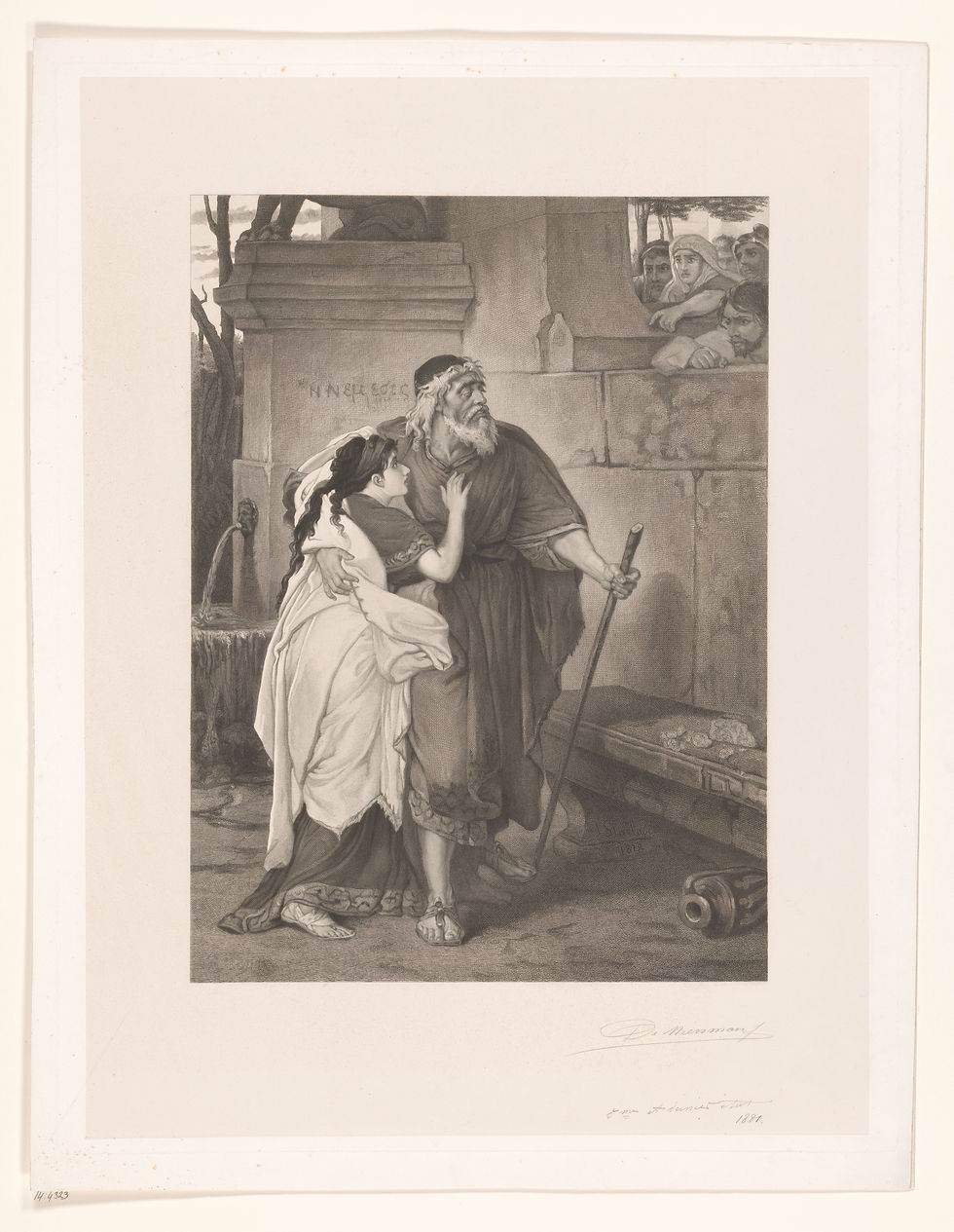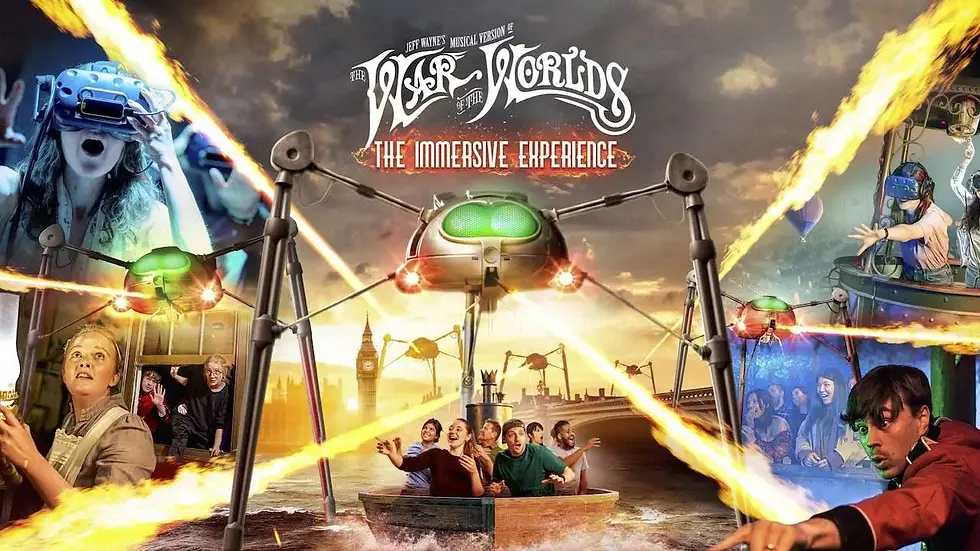It seems incongruous given what we understand Greek tragedy to be, to think of attending one as a cornerstone of one’s happiness and wellbeing. Greek Tragedy calls to mind Oedipus Rex, whose titular character kills his father, marries his mother, and then blinds himself when he finds out what he’s done. Or Elektra, a play about a young woman who convinces her brother - who has faked his death - to murder their mother to avenge their father. Or Medea, in which the eponymous main character murders her children and her husband’s new love interest, and her husband to punish him for abandoning her. Whichever example you choose - and there are many - there is a common theme. So why did audiences seek out such bleak and gory tales? Why are they still performed today?

Blind Oedipus, led by Antigone by François de Meersman, after Joseph Stallaert, 1881
The benefits were greater than the morbid fascination or moral edification one might suspect. Aristotle, in his Poetics, suggested that tragedies, by arousing terror, pity, or fear, invoked catharsis in the spectator. Catharsis, the purging of such feelings, lets audiences leave the theatre lighter than they entered it. Cleansed. The staying power of surviving Greek plays in our theatres today suggests that Aristotle was on to something.
To help achieve this, Ancient Greek tragedians had some special effects up their sleeves which have been in use ever since. Examples include the ekkyklema, a rolling platform to transport bodies on stage; the mechane, a crane to fly in god characters; and the periaktos, a revolving triangular prism that cycled through backdrops. A shaken box of rocks (vronteio) replicated thunder and a sunlight reflector (keravnoskopeion) recreated lightning (or should we call it Greece lighting?)

Three witches appear to Macbeth and Banquo by James Caldwall, Thomas Trotter, after Johann Heinrich Füssli, 1798
Versions of these effects recur in theatre around the world and across history. In Britain, Early Modern theatres rolled cannon balls across wooden floors to create thunder and threw gunpowder over candles for lightning. Gods flew in from above; demons entered through trap doors below (also an Ancient Greek device). The belief that attending plays had a positive effect on one’s well-being, however, did not persevere in the same way; rising Puritan anti-theatre sentiment condemned the theatre as provoking immorality and, combined with the outbreak of the English Civil War, resulted in the closure of England’s theatres in 1642. Nevertheless, the art form has persisted. So how do these intrinsic, practical effects hold up when theatres - mercifully reopened in England since 1660 and remaining so until the Covid-19 pandemic of 2020 - find themselves competing with cinema, streaming platforms and video games? Can a box of rocks capture the imaginations of audiences accustomed to Hollywood's multi-million dollar CGI budgets?
While the old ways are still mainstays, theatrical special effects have also evolved since Sophocles and Shakespeare. Take the Stranger Things stage adaptation of the popular Netflix series: instead of pulleys and wooden prisms, the show’s opening gambit uses light projection to depict the sinking of a naval vessel. In 2016, the RSC’s production of The Tempest used motion-capture technology to create a real-time avatar of the sprite, Ariel. Opera Australia has deployed large-scale digital screens, typically used for immersive digital art installations, to bring new depth and dimension to Wagner’s Ring Cycle. Jeff Wayne’s War of the Worlds musical, which has been touring for nearly twenty years, includes 15-metre tall fire-breathing fighting machines with pneumatic legs. It also includes “a 24-metre by seven-metre projection screen, a holographic screen, and a huge bridge that reaches out 20 metres into the audience.”

War of the Worlds: The Immersive Experience, West End Theatre
The modern special effects practitioner seamlessly combines technology and creativity in service of performance. In the race for audience attention, especially post-pandemic, such innovation has undoubtedly kept many playhouse doors open. As a result, audiences get to enjoy cutting-edge storytelling of plays new and old. Yet, for all the benefits of high-spec special effects, they come with a price tag. Many contemporary production tickets seem ever more out of reach, with some London theatres charging up to £300 for tickets to West End productions such as Cabaret and A Streetcar Named Desire.
In a cost of living crisis, the astronomically high cost of a ticket is a barrier to entry for many. This is concerning when the Arts Council England reported that theatre attendance was the cultural activity with the strongest impact on happiness. That is to say, Aristotle’s theory of catharsis still has legs, and contemporary audiences - no matter their wealth - ought to benefit. This was the principle behind the economics of the festivals where Greek tragedies were performed. Yes, tickets for Ancient Greek audiences to attend plays such as Elektra and others would have cost one-third of a day’s wages, but state funds existed to pay for citizens who otherwise could not afford entry. Furthermore, affordable theatre remained a mainstay in later eras; to watch a performance of The Tempest in Shakespeare’s day, London’s poor could purchase standing tickets for as little as a penny. This is approximately £1 in today’s money and has inspired Shakespeare’s Globe’s £5 Groundling ticket scheme.
Theirs is not the only bid to make pricing accessible. Since 2009, National Theatre Live invites audiences to purchase tickets for recorded theatrical productions in their local cinema. It is a program that tackles several issues concerning access, diminishing the scarcity of seats and dates, reducing the obstacle of accessing a venue, and eradicating limited views of the performance. And all this, for less than the cost of a regular National Theatre ticket.
So, for all that theatre is looking to futuristic technologies to attract and delight audiences, perhaps it needs to remember to keep spreading the benefit as far as possible. This isn’t a call to ditch the digital screens and mo-cap, but every once in a while, perhaps the budget can stretch to an Ancient Greek-inspired subsidiary scheme to get audiences into the building. With more bums on seats - or not, in the case of Shakespeare’s Globe - wouldn’t the effects be something special too?
Interested in reading more articles? Check out all our other pieces, and subscribe to our Substack for a weekly blog!
Comments